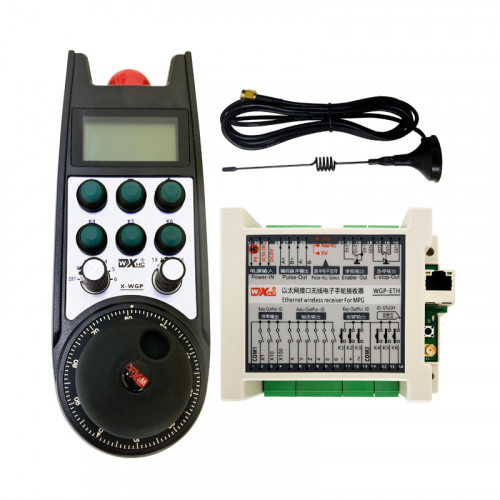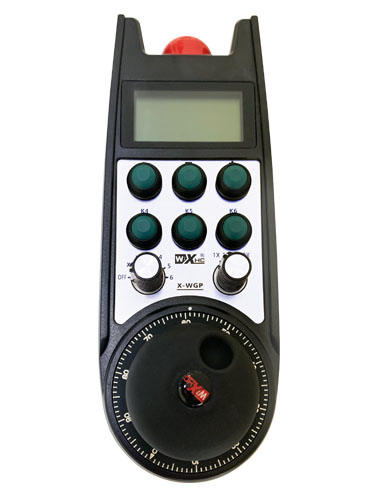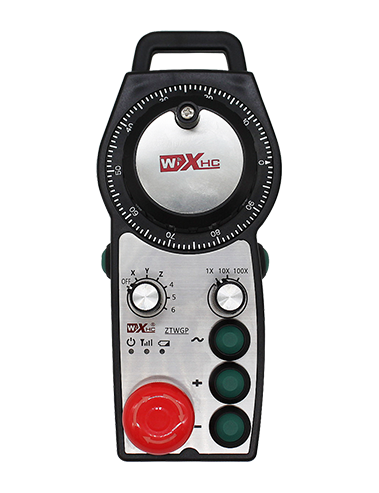Whakaaturanga
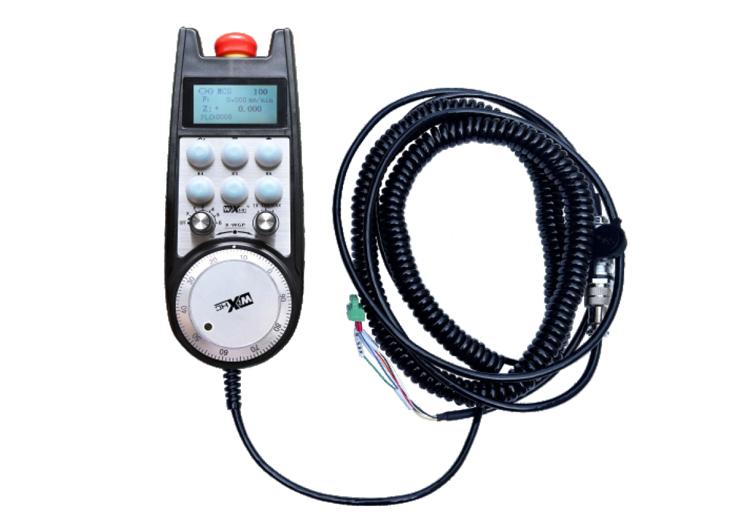
1. Kupu whakataki
Electronic handwheel is used for manual guidance, tūranga, Ko te whakahāngai taputapu, me etahi atu mahi i runga i nga taputapu miihini CNC. This model of electronic handwheel is a Siemens actual display wired electronic handwheel. The handwheel is connected to the X130 interface of the Siemens system through a network cable, and the system coordinates are read and displayed on the LCD screen of the handwheel through S7 protocol communication. The handwheel can also control system axis selection, whakanui, buttons, andother signals through communication.
2.Product functional features
1. Use a 6-core aviation plug cable for connection, with a handwheel cable length of 10 mita.
2. The handwheel screen can display system workpiece coordinates, mechanical coordinates,feed rate, Axis Whiriwhiringa, whakanui, and other information.
3. Tautoko Peke Kore Tautoko, hurihuri io tohu tohu, and the hand wheel shutdown emergency stop is still valid.
4. Tautoko 6 pātene ritenga, switch IO signals, and can output signals to the system through IO wiring or communication.
5. Tautoko 6 rānei 8 Te whakahaere Axis, with switch IO signals that can be output to the system through IO wiring or communication.
6. Tautoko 3 rānei 4 levels of magnification control, with switch IO signals that can be output to the system through IO wiring or communication.
7. Tautokohia te whakauru a Pulse, 100 Pulses / Tahuri, can output signals to the system through AB pulse wiring.
8. Supports Siemens S7 protocol and Siemens 828D, 840DSL, ONE and other model systems.
3. Whakatakotoranga Hua
| Handwheel working power supply voltage |
DC24V/1A |
| Receiver power supply voltage |
DC24V/1A |
| Receiver IO output load range |
DC24V |
| Hand wheel end cable length |
10m |
| Receiver end cable length |
1m |
| Receiver end network cable length |
3m |
| Operating temperature |
-25℃<Whakaahua x<55℃ |
| Anti-fall height |
1m |
| Custom Button Quantity |
6 |
| Product dimensions |
233*90.7*77.4(mm) |
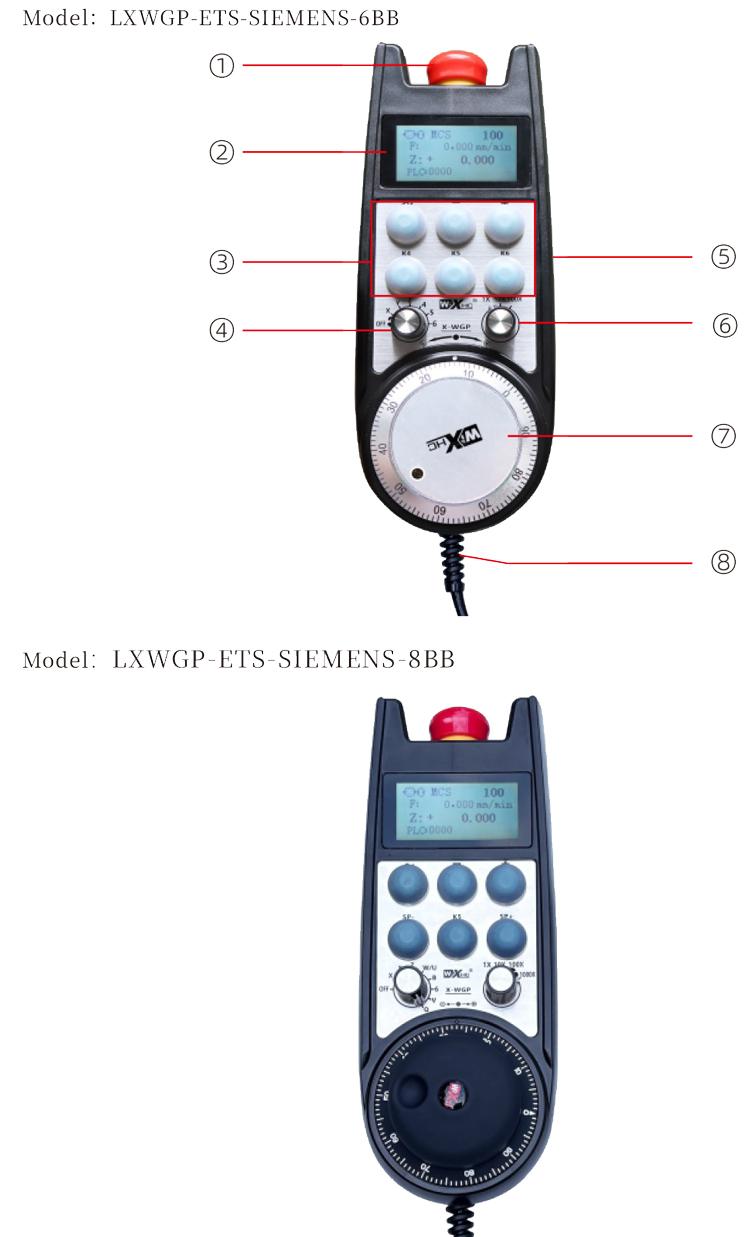
Rangi:
Emergency stop button:
Pēhi i te pātene aukati ohorere, and the two sets of emergency stop IO outputs on the receiver will be disconnected, and all functions of the handwheel will be invalid.
After releasing the emergency stop, Ko te aukati ohorere i te putanga o te kaiwhiwhi i runga i te kaiwhiwhi kua kati, and all functions of the handwheel are restored.
② Screen display:
PLC: 0000 indicates that the network cable is not connected, PLC: 1010 indicates that the network cable is successfully connected to the PLC system.
PLC: 1110 represents successful writing of system data to the handwheel, PLC: 0001 represents successful connection to the computer.
③ Custom button:
6 pātene ritenga, each corresponding to an IO output point on the receiver, also connected to the system through communication.
④ Axis selection switch:
The axis selection switch can switch the movement axis controlled by the handwheel.
⑤ Enable button:
Press and hold either enable button on both sides to activate the pulse encoder by shaking it. And the two groups on the receiver enable IO output to conduct, release the enable button to enable IO output to disconnect.
⑥ Magnification switch:The magnification switch can switch the magnification
controlled by the handwheel.
⑦ Pulse encoder:
Pēhi me te pupuri i te pātene Whakahohe, shake the pulse encoder, emit a pulse signal, and control the movement of the machine axis.
⑧ Handwheel cable:
Cable connecting the handwheel and receiver, aviation plug, used for handwheel power supply and communication.
5. Whakaahua Whakauru Hua
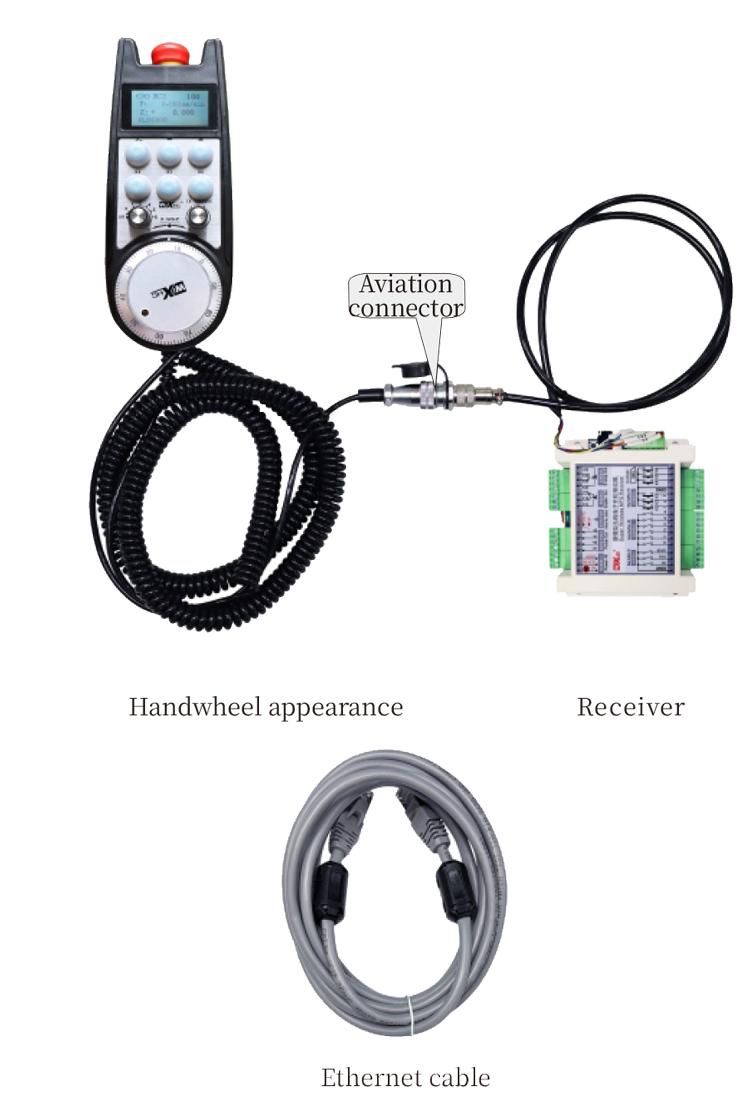
6. Aratohu Whakauru Hua
6.1 Product installation steps
1. Install the receiver into the electrical cabinet through the screw holes at the four corners.
2. Refer to our receiver wiring diagram and compare it with your on-site equipment. Connect the device to the receiver through cables and connect the receiver to the X130 interface of the system using Ethernet cables.
3. After fixing the receiver, install the aviation plug base at the handwheel opening position on the panel, and plug the other end of the base into the handwheel interface on the receiver. Then insert the aviation plug of the handwheel cable into the base and tighten the fixing device.
6.2 Nga Taumata Whakauru
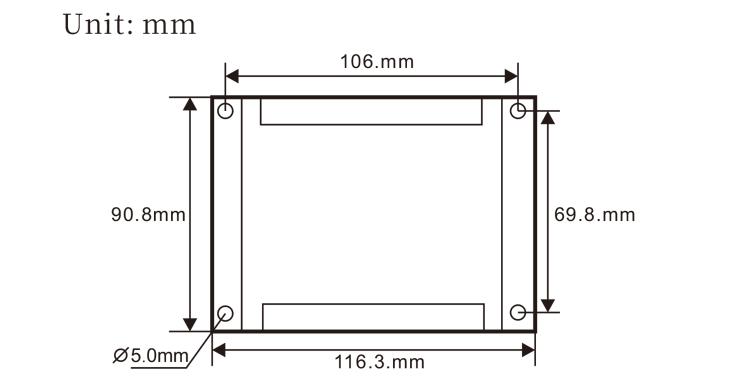
6.3 Installation dimensions of aviation plugs

6.4 He hoahoa tohutoro a te kaiwhiwhi
 7.Tohutohu Mahi Hua
7.Tohutohu Mahi Hua
1. When the receiver is powered on and the working indicator light of the receiver flashes, connect the receiver to the computer with a network cable, set the fixed IP address of the computer, and use the network configuration tool software to set the network parameters of the handwheel function. For specific setting methods, refer to the “LXWGP-ETS Wired Handwheel User Manual”.
2.After the receiver is set up, the system needs to program a PLC program. Please refer to the “LXWGP-ETS Different Siemens Numerical Control System Setting Methods” and PLC program routine materials for details.
3.After completing the above settings, take the receiver to the machine electrical cabinet and install it. Pull out the network cable from the computer and plug it into the X130 interface of the system.Connect the receiver power supply and pulse line.3.
4.After completing the above settings, take the receiver to the machine electrical cabinet and install it. Pull out the network cable from the computer and plug it into the X interface of the system. Connect the receiver power supply and pulse line.
5. Select axis selection: Switch the axis selection switch and select the axis you want to operate on.
6. Tīkina te whakanui: Switch the magnification switch and select the magnification level you need.
7. Neke toki: Pēhi me te pupuri i te pātene Whakahohe, Tīpakohia te huringa whiriwhiri Axis, select the magnification switch, and then rotate the pulse encoder to rotate the positive moving axis clockwise and the negative moving axis counterclockwise.
8. Press and hold any custom button to turn on the IO output of the corresponding button in the receiver, and release the button to turn off the output.
9. Pēhi i te pātene aukati ohorere, the corresponding emergency stop IO output of the receiver will be disconnected, the handwheel function will be disabled, release the emergency stop button, the emergency stop IO output will be closed, and the handwheel function will be restored.
8.Whakaahuatanga Tauira Hua

① LXWGP represents a wired appearance style, and the receiver communication interface
is an Ethernet interface.
② : Represents Siemens system specific.
③ : tohu te maha o nga huringa whiriwhiri Axis, represents axes, and represents
axes.
④ : represents the type of axis selection and magnification signal, A represents
point-to-point output signal, and B represents encoded output signal.

9.Product trouble shooting

10.Whakatikatika
1. Whakamahia koa ki te taiao maroke i te pāmahana o te rūma me te pehanga kia whakawhānuitia tana mahi ratonga.
2. Tena ra, kaua e whakamahia te whakamahi i nga taiao kore penei i te ua me nga mirumiru wai hei whakawhānui i te koiora ratonga.
3. Kia mau ki te ahua o te ringaringa ma te horoi ki te whakawhānui i tana mahi ratonga.
4. Tena koa karohia te kotiti, hinga, tōpito, take. to prevent damage to the precision components inside the handwheel or accuracy errors.
5. Mena kaore i whakamahia mo te wa roa, please store the handwheel in a clean and safe place.During storage and transportation, Me utu te aro ki te makuku me te aukati i te aukati.
11. Nga korero mo te Haumaru
1. Tena panuihia nga tohutohu i mua i te whakamahi me te aukati i nga umanga kore ngaio mai i te mahi.
2. If any abnormal situation occurs with the handwheel, please stop using it immediately and troubleshoot. Before troubleshooting, it is forbidden to use the faulty handwheel again to avoid safety accidents caused by unknown handwheel faults;
3. Mena e hiahiatia ana te whakatikatika, Tena whakapā atu ki te kaiwhakanao. Mena he kino te kino na te whakatikatika i a ia ano, Kaore te kaiwhakanao e tuku raihana






 7.Tohutohu Mahi Hua
7.Tohutohu Mahi Hua




